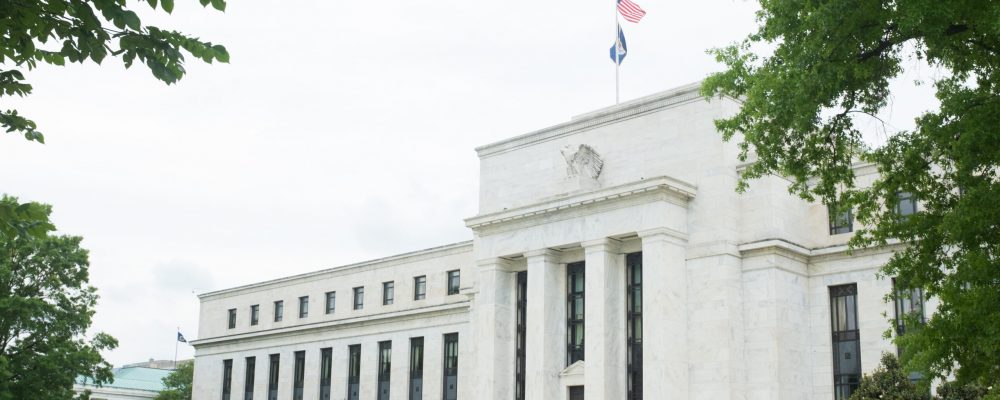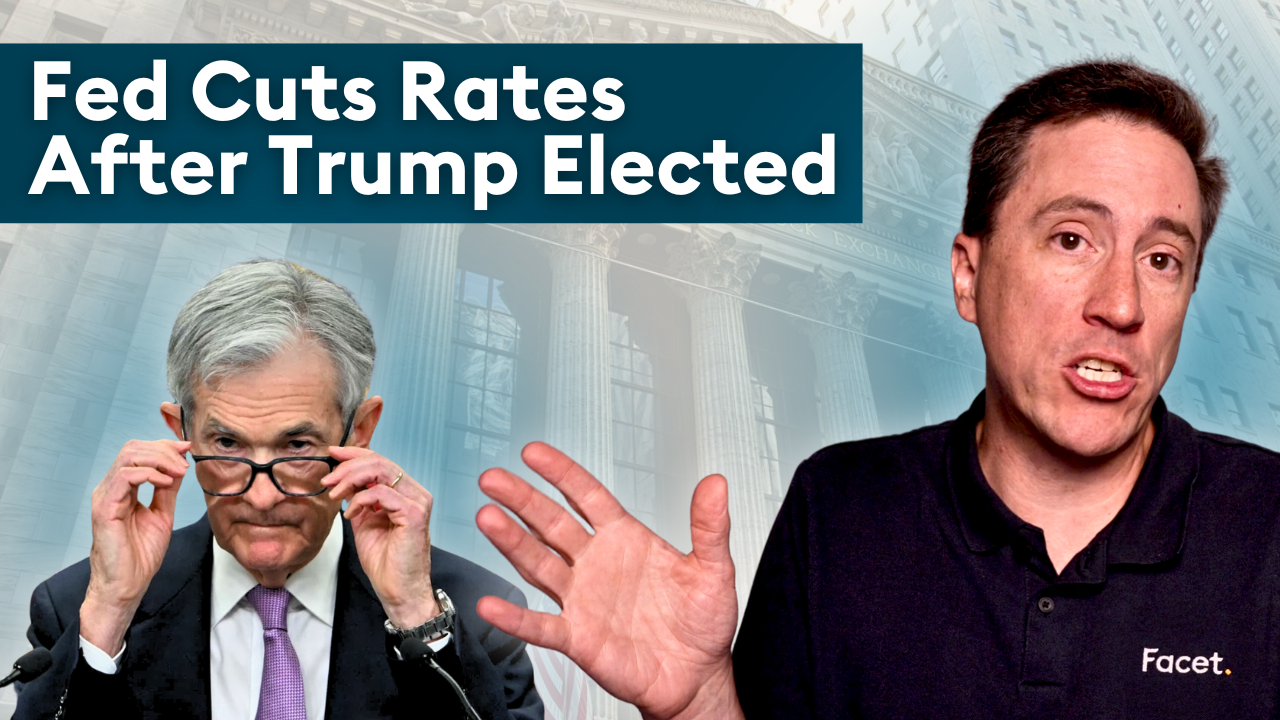
Key takeaways
- No formal action was taken on interest rates, but Powell's remarks suggested potential rate cuts later this year
- Recent inflation data may make the Fed less inclined to cut rates
- The Fed may soon slow the pace of its "balance sheet run-off," potentially increasing bank reserves
- Market performance likely to continue being driven by strong earnings growth, regardless of Fed actions
- Longer-term interest rates may fall if the Fed cuts rates, but there is no guarantee this will happen
The Federal Reserve held its March meeting on the 20th. As expected, no formal action was taken on interest rates. However, it was still one of the most highly anticipated meetings in several months.
Recent inflation data has come in relatively high, which could make the Fed less inclined to cut interest rates later this year. This meeting was the Fed’s chance to guide markets on what to expect.
Here’s what we learned.
Powell still anticipating cuts, but timing uncertain
Fed Chair Jerome Powell’s prepared remarks followed a familiar pattern. He started by emphasizing the Fed’s commitment to bringing inflation back down to 2%. He wants the market to know that the Fed remains focused on inflation and isn’t wavering from its 2% target.
He then suggested that some number of rate cuts remain the base case: “If the economy evolves broadly as expected, it will likely be appropriate to begin dialing back policy restraint at some point this year.” He acknowledged the recent higher inflation data but put it in the context of a broader economic picture that suggested inflationary pressures were easing.
He also emphasized that further progress on inflation remains uncertain. He repeated a line he had said a few times in the past: that the Fed needed “greater confidence” and that inflation was “moving sustainably down toward 2%.”
During the press conference, Powell was asked a few times about the jump in inflation data in January and February. In response, he mainly emphasized the Fed’s commitment to price stability, its 2% inflation target, and the fact that progress on inflation wasn’t taken for granted.
Interestingly, he was more dismissive of the possibility of rate hikes in the future, saying that the Committee believed that “our policy rate is likely at its peak” for this cycle, but “we are prepared to maintain the current target range for the federal funds rate for longer if appropriate.” In other words, if inflation remains too high, rate cuts will be pushed back. The bar for actual rate hikes is very high.
The dot plot
The Fed also released its quarterly Summary of Economic Projections (SEP) in conjunction with this meeting. The SEP includes the so-called “dot plot,” an exercise where each member of the Fed Committee estimates where they would set the interest rate target based on their own economic forecast. In other words, if one member was in charge of the Fed and the economy evolved exactly as that individual projects, where would they set rates? Each member answers this question for year-end 2024, 2025, 2026, and the “longer-term.”
When the last SEP was released in December, five of the 19 Fed Committee members projected two cuts in 2024, while 11 projected three or more. The projections stayed mostly the same this time, with a few members who previously projected four or five cuts now projecting three.

Source: Federal Reserve
This tells us that Fed committee members remain generally confident that inflation is still subsiding, and they are not overreacting to two months of relatively high inflation data.
Fed’s inflation expectations
It is important to emphasize that the dot plot isn’t a pledge; actual data will ultimately guide the Fed’s actions. If these last two months of high inflation figures turn out to be a blip, the Fed will probably wind up cutting three or more times. On the other hand, if higher inflation persists, we could easily get no cuts in 2024 at all.
Because of this, the proper way to analyze the dot plot is to put it in the context of the Fed’s inflation forecasts, which are also contained in the SEP.
While we don’t see the individual forecasts, the Fed publishes their median and range. In this case, the median forecast was 2.6%, with ⅔ of Committee member forecasts ranging from 2.5% to 2.8%.
Combining these forecasts with the dot plot is very telling. We can surmise that if inflation falls within the range that most Committee members expect, then the Committee will probably also support the number of rate cuts suggested by the dot plot.
In other words, the Fed doesn’t need inflation to fall to 2% to begin cutting. The Fed tells us that the appropriate rate level when inflation is 4% is different from when it is 2.5%. If you want to dive deeper, we detailed this idea after the Fed’s December meeting.
Slowing the run-off
The Fed owns just over $7 trillion of Treasury and mortgage bonds, often called the “balance sheet.” Since 2022, the Fed has allowed its balance sheet to shrink naturally by simply not reinvesting any cash flows that are paid on those bonds. This has decreased the Fed’s bond holdings by about $1.5 trillion over the last two years.

Source: Federal Reserve
Powell said no decision was made at this meeting about the balance sheet. However, he did say it would probably soon be appropriate to slow the pace of balance sheet run-off.
Following the 2008 financial crisis, the Fed changed its regulations for banks to require them to hold more cash reserves, much of which is deposited at the Fed. Economists call this an “ample reserve system” of banking regulation.
For the ample reserve system to work, the Fed needs to ensure there are enough total reserves in the banking system. It does this by creating new reserves in the Fed’s account and then buying bonds with them. This gets fresh reserves out into the system but, consequently, increases the amount of bonds the Fed holds.
The Fed still believes it can continue reducing the banking system’s total reserves, but it doesn’t want banks to run out. He did not reveal any specifics, but the Fed has previously said that it would stop the run-off “somewhat above the level it judges to be consistent with ample reserves.”
The balance sheet gets a lot of press, but it isn’t terribly important to most investors. In theory, a large balance sheet could contribute to inflation, which is why the Fed has been shrinking it recently. However, since the Fed adopted this ample reserves regime, there has been no obvious correlation between the size of the Fed’s balance sheet and inflation.
Others have linked the balance sheet to the rise in the stock market in 2020 and 2021, but if it were the Fed’s balance sheet pumping up the stock market, how does one explain the strong market in 2023 while the balance sheet was shrinking?
We expect to see a lot of headlines about the Fed’s balance sheet in the coming months, but remember this is mostly a technical banking sector issue—not really one that general stock and bond investors need to worry about.
What does this Fed meeting mean for markets?
Our view remains that stock market returns in 2024 will depend on the strength of the economy and company profit growth. Strong earnings reports in January and February were the main drivers of solid market returns so far in 2024.
While the Fed’s actions will have some impact, we don’t think Fed rate cuts are necessary for stocks to have a strong year. As long as earnings growth remains strong, we expect solid stock market performance to continue, regardless of what the Fed does.
The story is trickier for interest rates. We recently wrote about the fact that for longer-term interest rates (such as home mortgage rates) to fall meaningfully, the Fed probably needs to cut rates. We are inclined to think that inflation will subside from here and the Fed will wind up cutting a few times in 2024, but there’s no guarantee. If this doesn’t happen, interest rates could stay steady or even rise materially from here.


